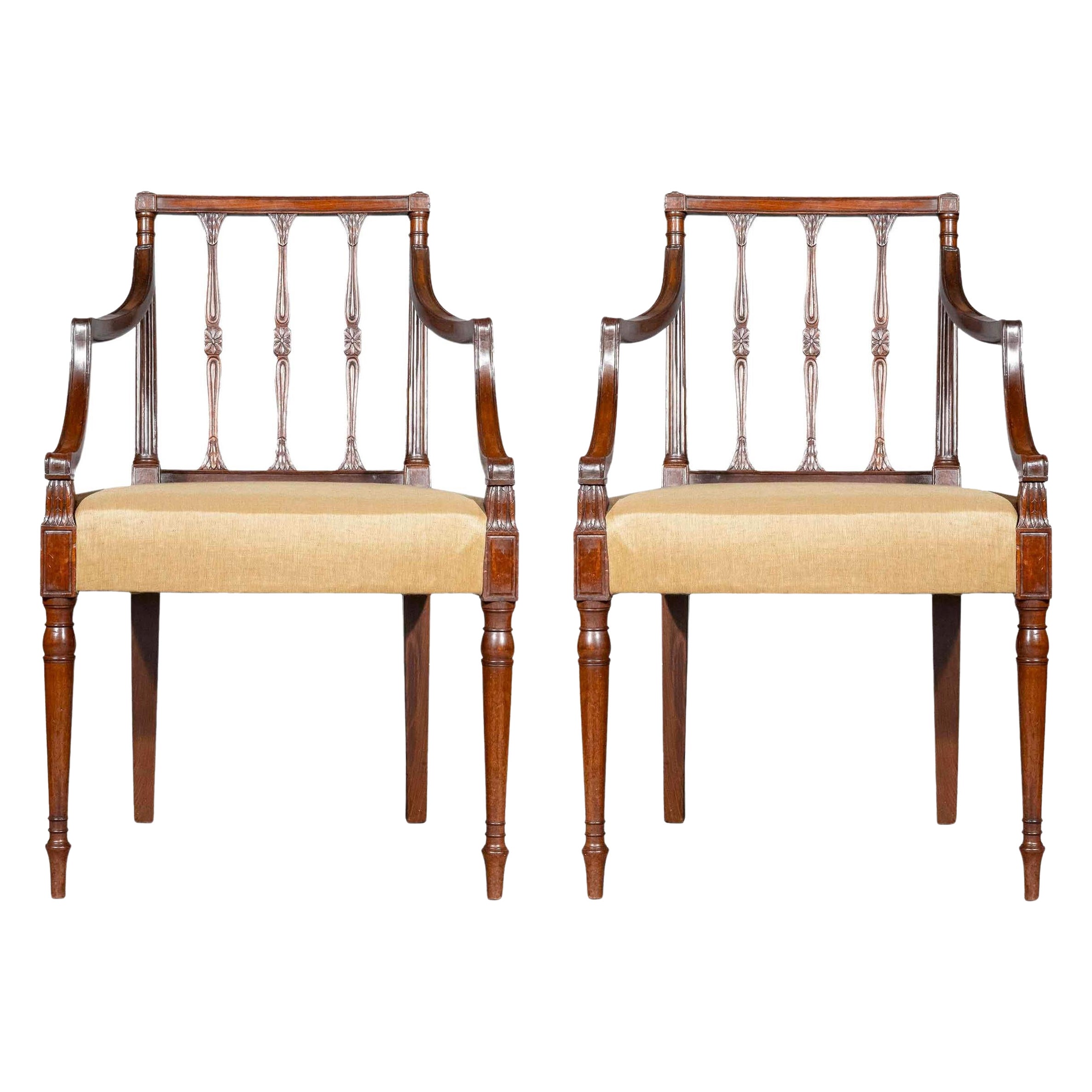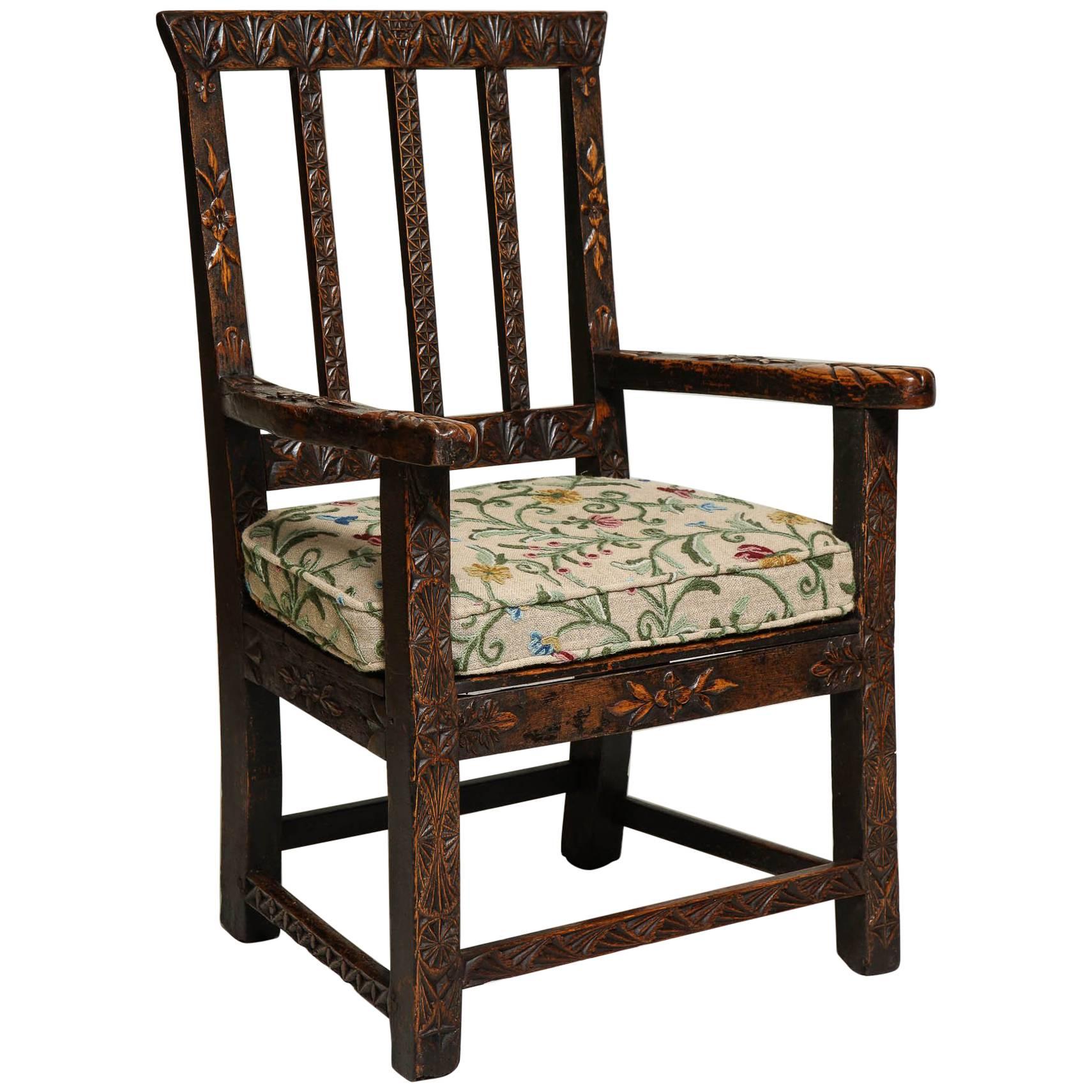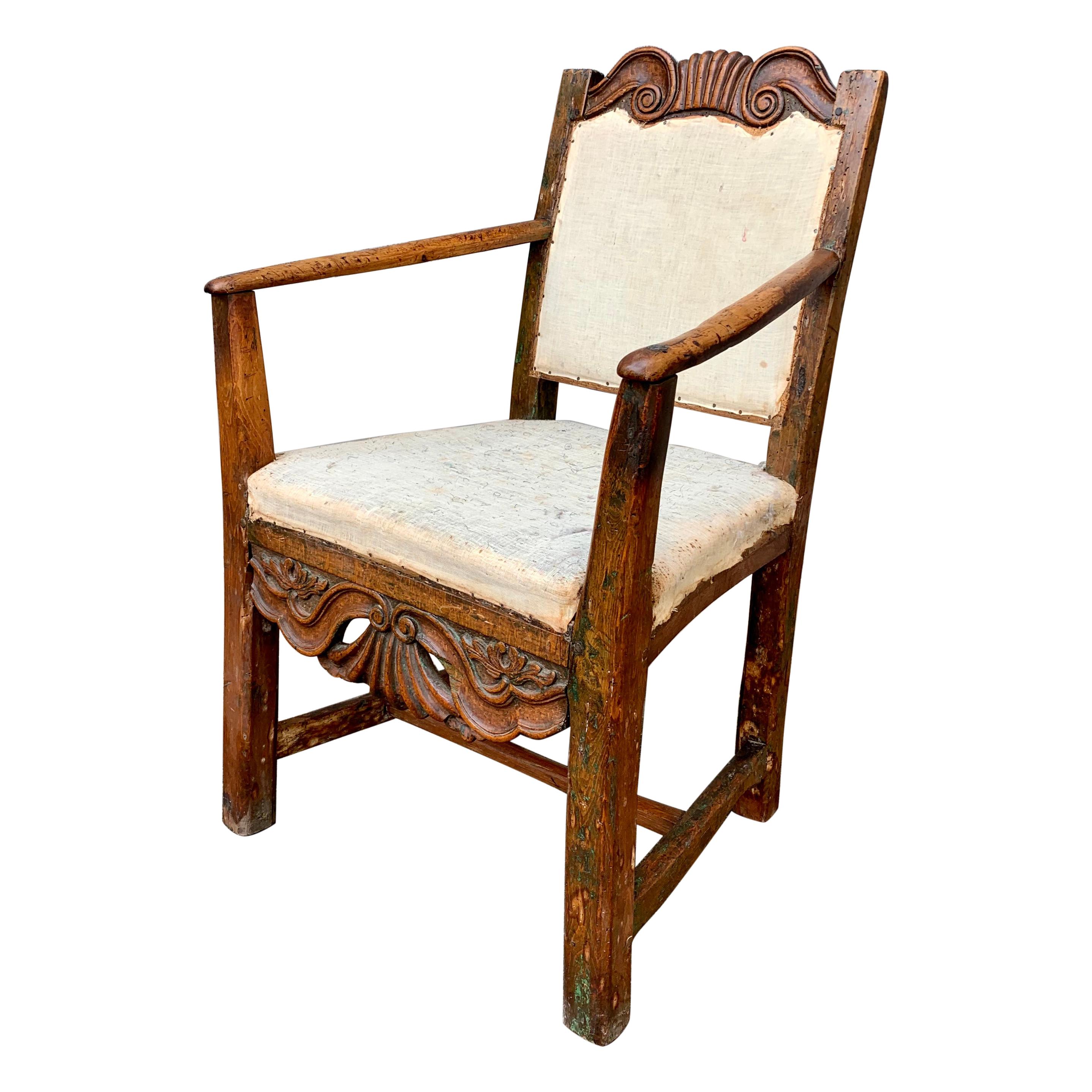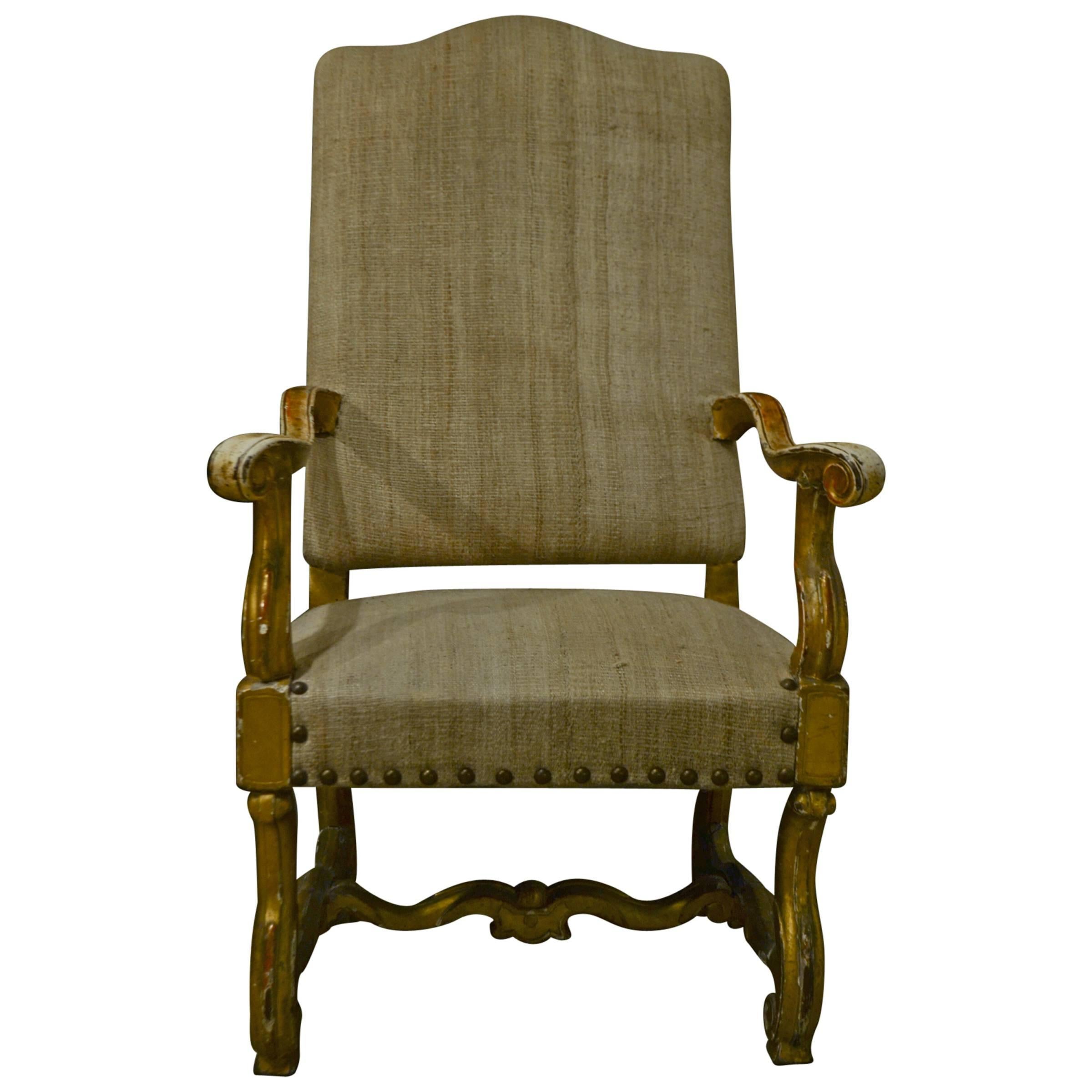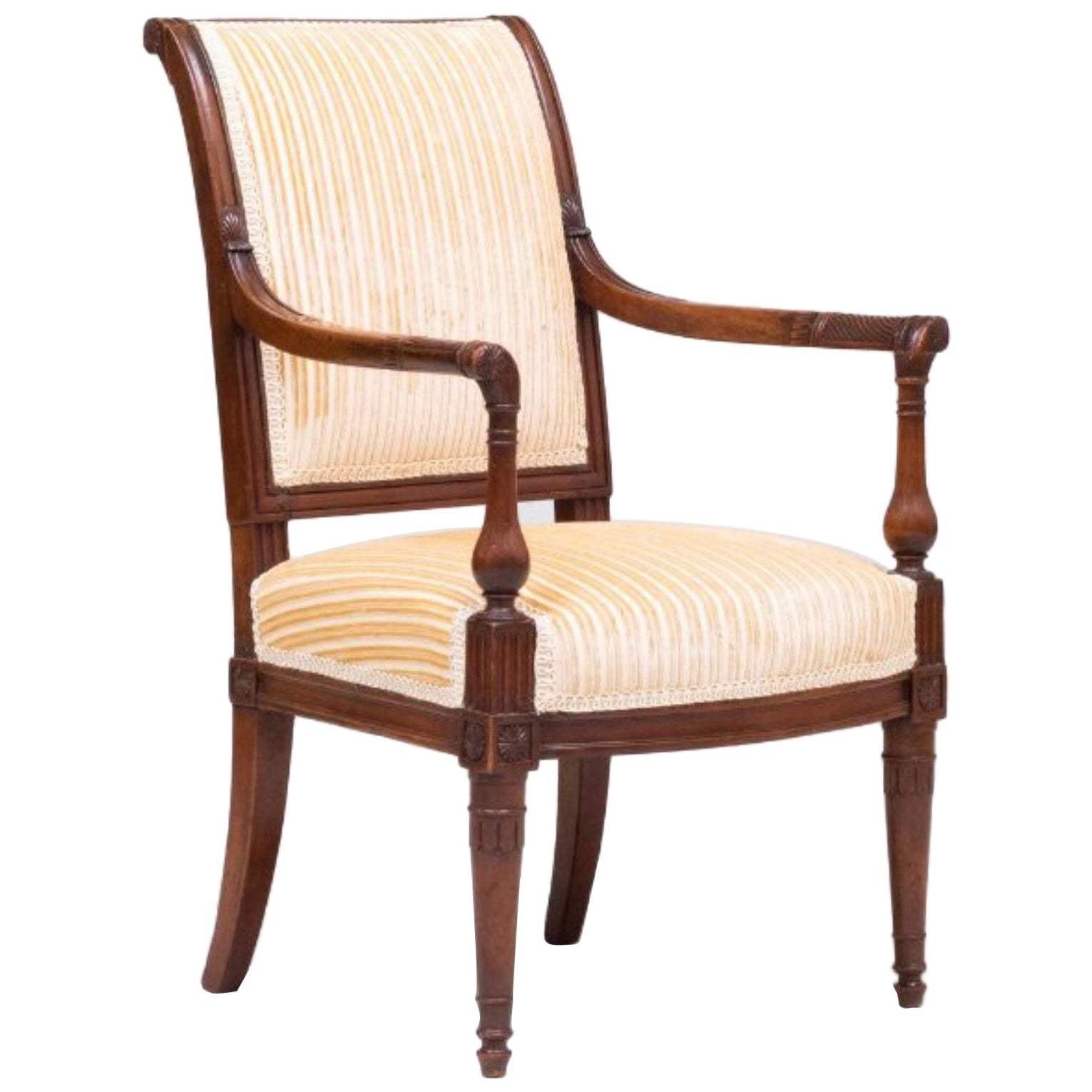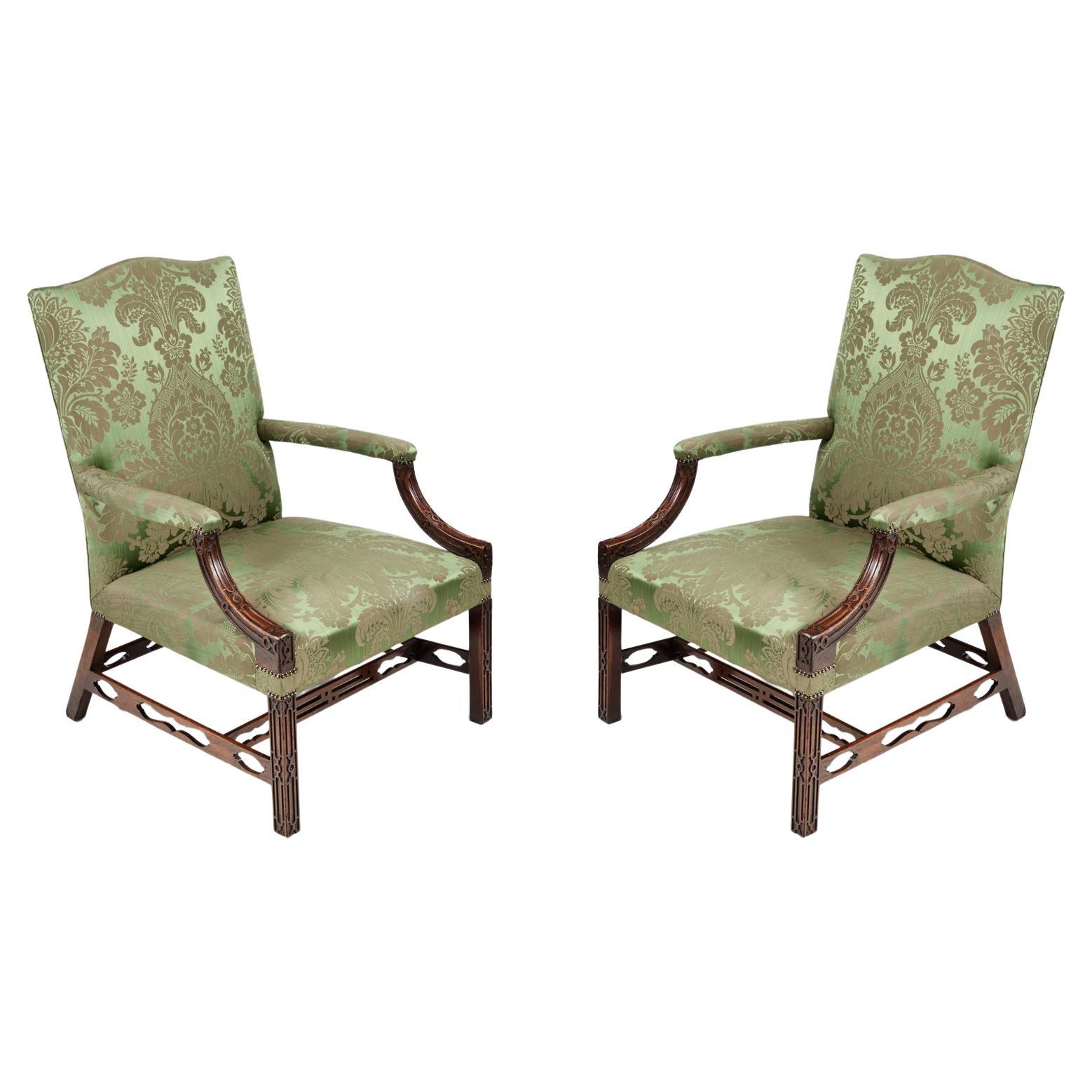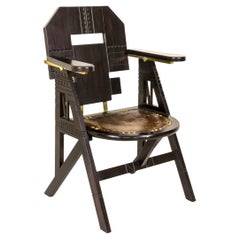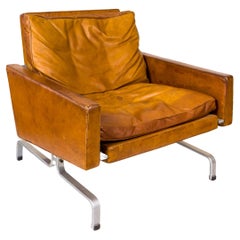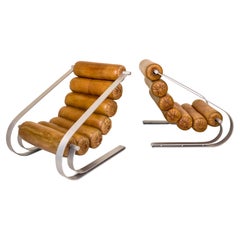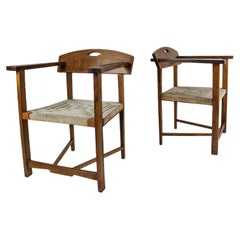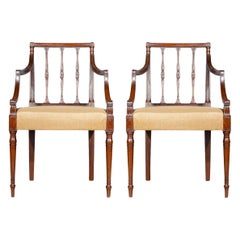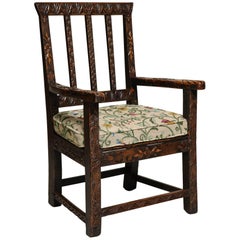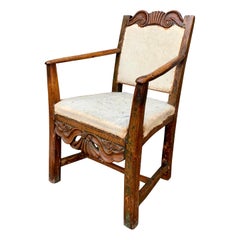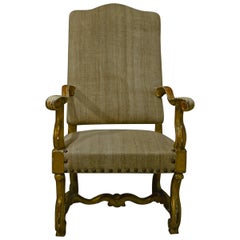Artículos similares a Late 18th Century Irish Folk Art Armchair, Circa 1780, Ireland
¿Quieres más imágenes o vídeos?
Solicita imágenes o vídeos adicionales al vendedor
1 de 10
Late 18th Century Irish Folk Art Armchair, Circa 1780, Ireland
Acerca del artículo
DESCRIPTION: Late 18th Century Irish Folk Art Armchair, Circa 1780, Ireland.
Very decorative piece made with oak.
CONDITION: Good condition. Wear consistent with age and use.
DIMENSIONS: Height: 90cm (35.5in) Width: 65cm (25.5in) Depth: 46cm (18in) Seat Height: 44cm (17in)
ABOUT THE STYLE: The chair, as furniture, is probably the oldest of all types of furniture found in Ireland. One of the earliest types of seating found in any rural home was the ‘creepie’; a roughly made stool often consisting of a log raised off the floor. Throughout the Irish Country Furniture exhibition there are many styles of stools and chairs on display, including súgán (rope) chairs and straw armchairs.
Other types of Irish chairs include the ladder-back kitchen chair, the country carpenter’s chair, the Windsor chair and various designs named after their localities, such as the Sligo and Leitrim chairs.
The average rural home commonly had wooden furniture such as chairs, a dresser, a settlebed and perhaps storage furniture such as a mealbin and a food press in the kitchen or hearth area. A bed would also be built into the outshot of the house.
Depending on the wealth of the household, there may also have been furniture such as a corner cupboard and a dowry chest (or bride’s box); a storage chest designed to hold linen, blankets and personal belongings.
The Irish vernacular furniture tradition was heavily influenced by English and Welsh vernacular furniture, which was already well established, and there are many similarities between the furniture styles.
Other influences include the styles of the furniture of wealthy houses, which were often adapted by local craftsmen for the country home. This can also be seen in the imitation of expensive grained woods with methods such as painting and ‘scumbling’, where a stain is applied on a light base coat, and drawn off with a graining comb.
Regional variations in styles of furniture can also betray their influences. A heavy three-legged seat of oak and ash made in the mid-19th centry in Co. Mayo is displayed in the Irish Country Furniture gallery; it is a type of chair found only in Connaught and it has been suggested that it was introduced to the province by Scottish settlers.
Also on display is an 18th century kitchen chair with a boarded seat and finely turned spindles from Co. Down; it is an unusual type of chair in Ireland and was probably influenced by English chairmaking design. A common feature of dressers from northern counties is their simple design and subdued decoration, possibly due to Scottish influence.
However, one of the biggest influences on the design of Irish traditional furniture was the characteristics of the house itself; items, such as the outshot bed and built-in cupboards and dressers, were built specifically to suit the space it was to occupy, or designed to be multi-functional and therefore save space, such as the settlebed.
The vernacular furniture tradition in Ireland developed much later than in England and Wales. The poverty and destruction brought by the wars of the 17th century meant that furniture was not common in rural Irish homes in this period.
However, the late 18th & early 19th centuries saw an increase in the wealth of sections of the peasantry, which, along with an increase in the number of skilled craftsmen and the supply of cheap, imported pine, led to furniture becoming available to more of the rural population.
Local carpenters, joiners and wheelwrights were the main makers of wooden furniture. In addition, many basketmakers made items of furniture such as chairs and child’s cradles using wicker rods until the early years of the twentieth century.
- Dimensiones:Altura: 91,44 cm (36 in)Anchura: 66,04 cm (26 in)Profundidad: 45,72 cm (18 in)Altura del asiento: 43,18 cm (17 in)
- Estilo:Arte popular (Del período)
- Materiales y técnicas:
- Lugar de origen:
- Época:
- Fecha de fabricación:1780's
- Estado:Desgaste acorde con la edad y el uso. Good Vintage Condition.
- Ubicación del vendedor:Girona, ES
- Número de referencia:1stDibs: LU952641426232
Sobre el vendedor
5,0
Vendedor profesional aprobado
Todos los vendedores superan estrictas normas de autenticidad y confiabilidad
Establecido en 1988
Vendedor de 1stDibs desde 2012
215 ventas en 1stDibs
Tiempo de respuesta usual: 7 horas
Asociaciones
20th Century Specialists
- EnvíoRecuperando presupuesto…Envío desde: Girona, España
- Política de devolución
Partes de esta página se han traducido automáticamente. 1stDibs no puede garantizar la exactitud de las traducciones. El inglés es el idioma predeterminado de este sitio web.
Garantía de autenticidad
En el improbable caso de que haya algún problema con la autenticidad de un artículo, ponte en contacto con nosotros en un plazo de 1 año para recibir un reembolso total. DetallesGarantía de devolución de dinero
Si tu artículo no es como se describe, sufre daños durante el transporte o no llega, ponte en contacto con nosotros en un plazo de 7 días para recibir un reembolso total. DetallesCancelación dentro de las 24 horas
Tienes un período de gracia de 24 horas para reconsiderar tu compra, sin preguntas.Vendedores profesionales aprobados
Nuestros vendedores de primera clase deben cumplir estrictos estándares de servicio para mantener la integridad de nuestros anuncios.Garantía de igualación de precios
Si encuentras que un vendedor publicó el mismo artículo por un precio menor en otro lado, igualaremos ese precio.Entrega global de confianza
Nuestra red de transporte de primera ofrece opciones de envío especializado en todo el mundo, que incluye envío personalizado.Más de este vendedor
Ver todoBélgica Sillón ART DECO, Circa 1920 Bélgica
DESCRIPCIÓN: ARMADURA ART DECO BELGA, CIRCA 1920 Bélgica. Pieza muy decorativa realizada con roble ebonizado, detalles de latón, asiento de cuero original y motivos africanos/colonia...
Categoría
principios del siglo XX, Belga, Art Decó, Sillones
Materiales
Latón
Sillón de mediados de siglo Poul Kjaerholm "PK-31", circa 1950, Dinamarca
Por E. Kold Christensen, Poul Kjærholm
DESCRIPCIÓN: Sillón de mediados de siglo Poul Kjaerholm "PK-31", circa 1950, Dinamarca. Pieza muy decorativa realizada con cuero y acero.
ESTADO: Buen estado vintage. Desgaste prop...
Categoría
mediados del siglo XX, Danés, Moderno de mediados de siglo, Sillones
Materiales
Acero, Cromo
Pareja de sillones Marzio Cecchi de mediados de siglo, hacia 1968, Italia
Por Marzio Cecchi
DESCRIPCIÓN: Pareja de sillones Marzio Cecchi, fabricados en 1968 en Italia. Piel original en estado vintage. El asiento tiene un diseño elegante, que consiste en cojines de forma ci...
Categoría
mediados del siglo XX, Italiano, Moderno de mediados de siglo, Sillones
Materiales
Acero
Pareja de sillones, hacia 1920, Inglaterra
Pareja de sillones,
Muy decorativo.
Hecho con roble y cuerda
Alrededor de 1920, Inglaterra.
Muy buen estado vintage.
Categoría
mediados del siglo XX, Inglés, Moderno de mediados de siglo, Sillones
Materiales
Soga, Roble
6500 US$ juego
Pareja de sillones André Sornay, hacia 1960, Francia
Por Andre Sornay
Pareja de sillones André Sornay.
Este sillón dará calidez a tu interior con el color de su madera, una pieza perfecta para un interior tipo chalet.
Hecho con pino.
Alrededor de 19...
Categoría
mediados del siglo XX, Francés, Moderno de mediados de siglo, Sillones
Materiales
Pino
6500 US$ juego
Sillón "Corazón" Arts and Crafts, Escuela de Cotswold, circa 1920, Inglaterra
Por Liberty & Co.
DESCRIPCIÓN: Sillón "Corazón" Arts and Crafts, Escuela de Cotswold, Circa 1920, Inglaterra
Roble macizo, patas rectas, reposabrazos curvados, asiento original cepillado, rótulo de co...
Categoría
principios del siglo XX, Inglés, Artes y manualidades, Sillones
Materiales
Roble
También te puede gustar
Sillones Jorge III del siglo XVIII Circa 1780
Por Thomas Sheraton
Un par de sillones de época de Jorge III extremadamente elegantes y de rara calidad. Inglés, hacia 1780.
Por qué nos gustan
Modelo maravillosamente elegante, de aspecto muy delicad...
Categoría
Antiguo, finales del siglo XVIII, Europeo, Jorge III, Sillones
Materiales
Tapicería
10.278 US$ juego
Silla de arte popular inglés del siglo XVIII
Sillón inglés de roble de lo más inusual, con profusa talla en barandillas, cresta y brazos, y que posee un gran color y patinado. Cojín de felpa a medida sobre asiento de tablón pos...
Categoría
Antiguo, Década de 1760, Inglés, Arte popular, Sillones
Materiales
Roble
Pequeño sillón sueco del siglo XVIII de arte popular rococó primitivo
Sillón de arte popular rococó del siglo XVIII de la principal categoría de muebles típicos del arte popular sueco
Categoría
Antiguo, finales del siglo XVIII, Sueco, Rococó, Sillones
Materiales
Madera
1400 US$ Precio de venta
Descuento del 20 %
Sillón, hacia el siglo XVIII
Sillón, hacia el siglo XVIII.
Categoría
Antiguo, siglo XVIII, Sillones
Materiales
Tapicería, Madera
7500 US$
Sillón de niño de caoba Directoire, Finales del siglo XVIII
Sillón diminuto con desgaste propio de la edad y el uso.
Categoría
Antiguo, finales del siglo XVIII, Francés, Luis XVI, Sillones
Materiales
Caoba
Pareja de sillones Gainsborough de finales del siglo XVIII
Pareja de sillones Gainsborough de finales del siglo XVIII, cada uno con asiento tapizado
y moldeado respaldo y reposabrazos abierto acolchado. Con calado ciego en los brazos descen...
Categoría
Antiguo, finales del siglo XVIII, Inglés, Sillones
Materiales
Caoba
45.893 US$ juego
